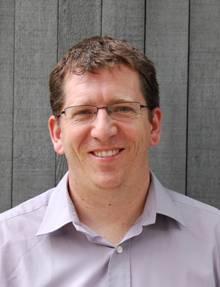
3rd Edition - European Meeting of Neuroscience by PhD students
25th May 2018, Grenoble (France)
2nd Edition > Senior researchers
ICREA Research Professor at Vall d'Hebron Institute of Oncologia (Spain)
Short BiographyLaura Soucek graduated in 1996 in Biological Sciences at the University La Sapienza in Rome. She completed her PhD in Genetics and Molecular Biology at the Nucleic Acid Center of the National Research Center, in Rome. In 2001, she joined the University of California, San Francisco, initially as postdoctoral fellow and later, in 2006, as an assistant researcher. There, she published in some of the most prestigious international journals including Nature, Nature Genetics, Nature Medicine, Cancer Cell and Molecular Cell Biology. Since early 2011, Dr. Soucek heads the Mouse Models of Cancer Therapies group at the Vall d'Hebron Institute of Oncology (VHIO) in Barcelona. She received prestigious awards and grants: the AACR award "Future Leaders, New Directions", a Miguel Servet fellowship, the FERO Foundation's award, a grant by the Association for International Cancer Research (AICR) and a European Research Council (ERC) grant. In October 2014, she was appointed research professor at the ICREA (Catalan Institution for Research and Advanced Studies). In December 2015, she founded Peptomyc S.L., a spin-off company aiming at treating cancer with anti-Myc peptides. Research interestsThe Soucek team focuses on the Myc oncoprotein, whose deregulation is involved in almost all human cancer types. They have created a Myc dominant negative variant, Omomyc, to investigate the therapeutic benefits of inhibiting Myc in cancer. They demonstrated that Myc inhibition has a remarkable therapeutic effect in many mouse models of cancer, while only causing mild and reversible side effects in normal tissues. They also showed that Myc is a safe pharmacological target for many, perhaps all, cancers. The group's goal is now to push such therapeutic approach further towards the clinic. To do so, they are making use of a new generation of Myc inhibitory small molecules, as well as Omomyc-based cell-penetrating peptides (CPP) and nanoparticle technologies. Such innovative potential treatments could boost our therapeutic arsenal against the majority of human cancers. Source: VHIO and ICREA websites Key Wordscancer, Myc, oncogene, molecular therapy Most relevant scientific publications
SANFEY Alan Director of the Neural Decision Science Laboratory (NDSL)
Short BiographyAfter studying psychology at the University College in Dublin, Ireland (BA with honours in 1995), Alan Sanfey moved to the University of Colorado to further study cognitive psychology (PhD in 2001). He then was a postdoctoral fellow for two years at Princeton University (USA), before being appointed associate professor at the University of Arizona (USA) in 2004. On top of this position he still holds, he also has been a principal investigator at the Donders Institute for Brain, Cognition and Behaviour of the Radboud University in Nijmegen (Netherlands) since 2009. Alan Sanfey is the current director of the Neural Decision Science Laboratory (NDSL) based in three locations: the University of Arizona, the Donders Institute and the University of Trento (Italy). He received prestigious awards and grants, among them an ERC Starting Grant award in 2013, a National Science Foundation award in 2012, a Province of Trentino scientific award in 2008 and a National Institute of Aging R21 award in 2007. Research interestsAlong with his international NDSL lab, Alan Sanfey is interested in investigating the psychological and neural processes underlying how we make decisions and choices. Decision neuroscience offers a novel approach to the study of both individual and interactive decision-making by combining the methods of behavioral experiments, functional neuroimaging, and formal economic models. Use of this methodology has the potential to advance our knowledge of existing theoretical accounts of how people make decisions and judgments by informing and constraining these models based on the underlying neurobiology. Examining sophisticated high-level behavior at a neural level, such as deciding on how much risk to take with an investment or deciding on a strategy when playing a competitive game with an opponent, can provide important clues as to the fundamental mechanisms by which decision-making operates. A further goal of his group is to use the knowledge gleaned from these studies to inform public policy debates, for example in understanding how expectations play a role in financial and health-care decisions. Sources: Decision Neuroscience research group (http://www.ru.nl/donders/research/theme-2-perception/decision/) and NDSL (http://www.decisionneurosciencelab.com/) websites Key WordsEmotion and cognition in decision-making, risk and uncertainty, decision conflict, fairness and cooperation, human-judgment, neural dynamics Most relevant scientific publications
|



